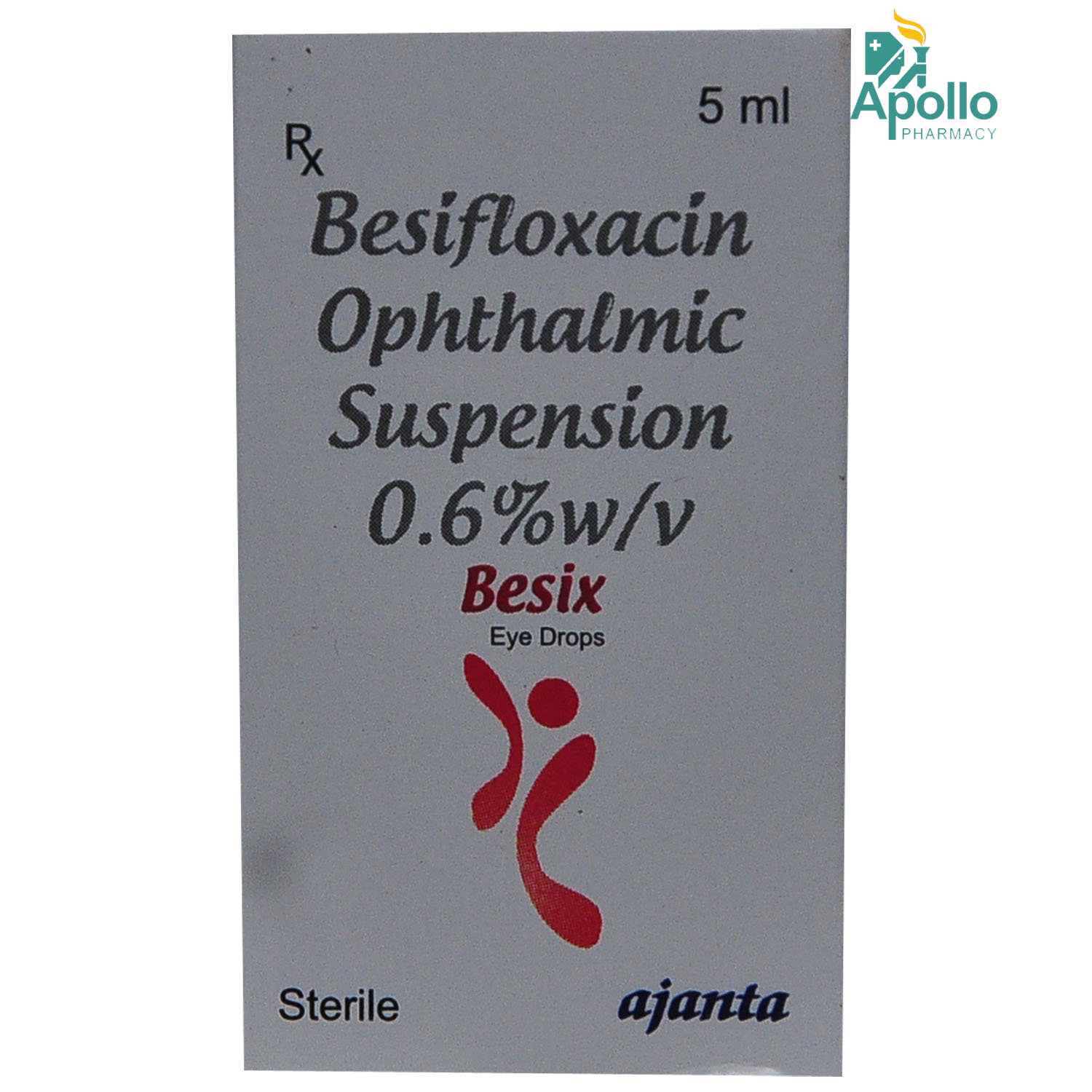Besifloxacin
About Besifloxacin
Besifloxacin belongs to the class of ophthalmic medications called fluoroquinolone antibiotics, primarily used to treat bacterial infections, including conjunctivitis/pink eye. Conjunctivitis is the infection of the outer white membrane of the eyeball. This infection is highly contagious and can pass from one person to another. Signs and symptoms include pink or red-toned eyes, a gritty feeling in the eyes, itchiness in the eye areas, teary eyes, and thick discharge around the eyes.
Besifloxacin contains Besifloxacin, which helps treat and prevent a wide range of bacterial infections. It kills bacteria (bactericidal action) by preventing the synthesis of enzymes, specifically DNA gyrase and topoisomerase IV, which are essential for bacterial cell growth and survival. Besifloxacin has a broad spectrum of antibacterial activity against both aerobic Gram-positive and Gram-negative bacteria.
Besifloxacin is available for ophthalmic use only. You are advised to use Besifloxacin for as long as your doctor has prescribed it, depending on your medical condition. In some cases, you may experience certain common side effects, such as eye irritation, eye redness, pain during administration, and blurred vision. Most of these side effects of Besifloxacin do not require medical attention and typically resolve on their own over time. However, you are advised to talk to your doctor if you experience these side effects persistently.
Do not take Besifloxacin on your own, as self-medication may lead to antibiotic resistance, in which antibiotics fail to act against specific bacterial infections. You should not wear contact lenses while you have symptoms of bacterial conjunctivitis or while you are applying Besifloxacin. Consult your doctor before using Besifloxacin if you are pregnant or breastfeeding. Besifloxacin should be used with caution in children. It is not recommended for use in newborns. Besifloxacin may cause temporary vision problems (blurred vision), so be cautious while driving and operating machinery.
Uses of Besifloxacin
Medicinal Benefits
Besifloxacin belongs to the group of medicines called fluoroquinolone antibiotics, which are used to treat bacterial infections, including conjunctivitis (also known as pinkeye). Besifloxacin contains Besifloxacin, which kills bacteria (bactericidal action) by preventing the synthesis of enzymes, specifically DNA gyrase and topoisomerase IV, that are essential for the growth and survival of bacterial cells. Besifloxacin has a broad spectrum of antibacterial activity against both aerobic Gram-positive and Gram-negative bacteria.
Directions for Use
- Follow your doctor's instructions on the dosage and timing of this medication to ensure safe and effective use.
- Lie down and tilt your head backwards. Gently pull down your lower eyelid, create a pocket, and instil the number of drops as advised by your doctor. Close your eyes for 1-2 minutes.
- Besifloxacin is for ophthalmic use only. Avoid touching the dropper's tip to avoid contamination.
Storage
Side Effects of Besifloxacin
- Eye redness
- Eye irritation
- Eye pain
- Temporary blurred vision
Drug Warnings
If you are allergic to Besifloxacin or any other quinolone or fluoroquinolone antibiotics, please tell your doctor. Use Besifloxacin for the full prescribed duration, even if your symptoms improve early. Stopping it too soon may allow the bacteria to survive, increasing the risk of a recurring or drug-resistant infection. Please inform your doctor if you are pregnant or breastfeeding before starting Besifloxacin. Besifloxacin is not recommended for children under 1 year of age, as its safety and effectiveness have not been established. Also, inform your doctor about all other medications you have been taking before starting Besifloxacin. Besifloxacin may cause temporary blurred vision. Therefore, avoid driving or operating heavy machinery until your vision is clear and stable. Before using Besifloxacin, inform your doctor if you have fungal infections, viral infections (such as conjunctivitis or corneal infections), or parasitic infections (such as amoebiasis). Please do not touch the container tip to your eye, eyelids, or surrounding areas, as it may contaminate the solution and cause eye infections.
Drug Interactions
Drug-Drug Interaction: No interaction was found.
Drug-Food Interaction: No interaction was found.
Drug-Disease Interaction: Besifloxacin should not be given to patients with other types of eye infections (such as infections caused by viruses, fungi, and mycobacteria).
Drug-Drug Interactions Checker List:
Safety Advice

Alcohol
cautionBesifloxacin may cause interaction with alcohol. Therefore, avoid consuming alcohol while using Besifloxacin.

Pregnancy
cautionIt is unknown whether Besifloxacin is safe during pregnancy. Consult the doctor if you are pregnant; the doctor will weigh the benefits and risks before prescribing this medicine.

Breast Feeding
cautionIt is unknown whether Besifloxacin passes into breastmilk. Consult your doctor before using Besifloxacin if you are breastfeeding.

Driving
cautionBesifloxacin may cause temporary blurred vision. Therefore, avoid driving or operating heavy machinery until your vision is clear.

Liver
safe if prescribedBesifloxacin is safe if prescribed by the doctor. Please consult the doctor if you have liver disease before using Besifloxacin.

Kidney
safe if prescribedBesifloxacin is safe if prescribed by the doctor. Please consult the doctor if you have kidney disease before using Besifloxacin.

Children
safe if prescribedBesifloxacin is not recommended for children below 1 year of age. For over 1 year, it should be used under the supervision of a doctor.
Habit Forming
Diet & Lifestyle Advise
- Try to maintain good hygiene to keep your eyes clean and irritant-free.
- Do not rub your eyes, even if some ophthalmic drugs cause your eyes to itch.
- Know your allergy triggers, such as pollen, dust and other factors.
- Sleep for at least six to eight hours to rejuvenate your eyes naturally.
- Wash your eyes with clean water at least twice a day.
- Manage stress, eat healthily, drink plenty of water, exercise regularly and get plenty of sleep.
- Wash your hands thoroughly, and do not touch the dropper before using drops to avoid contamination.
- Reduce screen time (by avoiding watching TV or phone) and use sunglasses while going into the sunlight.
- Avoid alcoholic beverages as they can make you dehydrated and affect your sleep. This effect can also affect your body’s ability to fight off infections.
Special Advise
- Besifloxacin should not be administered directly into the anterior chamber of the eye.
- Do not take Besifloxacin on your own, as self-medication may lead to antibiotic resistance, in which antibiotics fail to act against specific bacterial infections.
- Using Besifloxacin for prolonged periods may result in a new fungal eye infection (secondary infection). Do not use Besifloxacin for longer than the prescribed duration.
Patients Concern
Disease/Condition Glossary
Conjunctivitis: Conjunctivitis, also known as pink eye, is a condition in which the outer membrane of the eyeball becomes swollen and infected. There are typically three types of conjunctivitis: bacterial conjunctivitis, viral conjunctivitis, and allergic conjunctivitis. Common signs and symptoms include red-toned eyes with a thick discharge and intense itchiness. It is highly contagious and can spread from one person to another.
FAQs
Besifloxacin is used to treat bacterial eye infections, such as conjunctivitis (also known as pink eye), by targeting and eliminating the bacteria responsible for the infection. It helps reduce symptoms like redness, itching, swelling, and discharge, promoting faster healing and restoring eye comfort and clarity.
Besifloxacin contains Besifloxacin, which works by inhibiting the synthesis of DNA gyrase and topoisomerase IV, enzymes required for the growth and survival of bacterial cells. This prevents the bacteria from repairing and multiplying. Thus, it helps treat infections.
Besifloxacin should be taken in the dose and duration as advised by the doctor. If you take it in a dose greater than the recommended amount, it may cause unpleasant side effects. If you think your symptoms are not improving, please consult your doctor.
Do not take Besifloxacin on your own, as self-medication may lead to antibiotic resistance, in which antibiotics fail to act against specific bacterial infections.
Yes, Besifloxacin may cause eye irritation. Besifloxacin contains a preservative, Benzalkonium chloride, which is known to cause eye irritation. If symptoms become severe, please consult your doctor immediately.
Inform your doctor before taking any medications while using Besifloxacin. If your doctor advises you to use other eye drops in combination with Besifloxacin, allow at least 10 minutes between the application of each eye drop.
Do not wear contact lenses while using Besifloxacin. Additionally, avoid prolonged use, as it may cause cataracts (clouding of the lens).
You are generally recommended to use Besifloxacin 3 times a day. However, it's essential to follow the specific instructions provided by your doctor, as they may adjust the dosage according to your condition.
Besifloxacin begins to work as early as 3 days. Itching and discharge will be relieved first, but soreness and pain may persist for up to 7 days. However, complete the full course of treatment as prescribed by your doctor and inform them if your symptoms do not improve or worsen.
No, using Besifloxacin for an extended period may lead to the overgrowth of non-susceptible (resistant) organisms, including fungi. If you develop a new fungal eye infection (secondary infection), discontinue use and consult your doctor. Therefore, do not use Besifloxacin for longer than the prescribed duration.
No, you should not wear contact lenses while using Besifloxacin. You can re-insert the contact lenses 15 minutes after applying the Besifloxacin.
You should consult your doctor if you experience eye pain, increased redness or irritation, allergic reactions, no improvement within days of treatment. Additionally, please inform your doctor if you have an eye injury or are undergoing eye surgery.
Besifloxacin should be avoided if you are allergic to Besifloxacin, if you have recent eye injuries or surgeries or in infants below 1 year. However, consult your doctor before using Besifloxacin.
Yes, Besifloxacin can cause a burning sensation in the eyes when first used. This is usually temporary and should subside quickly. However, if the burning sensation persists, consult your doctor.
Yes, Besifloxacin is an antibiotic. It belongs to the class of ophthalmic medications called fluoroquinolone antibiotics.
No, you do not need to refrigerate Besifloxacin. Store Besifloxacin at room temperature in a cool, dry place, away from sunlight. Do not freeze. Keep it out of reach of children.
The common side effects of Besifloxacin include eye irritation, redness, pain, and blurred vision. If any of these side effects persist or worsen, please consult your doctor.





